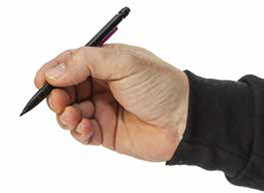
Flexor tendon surgery involves the tendons in charge of bending the fingers or thumbs into the palm of your hand. These tendons let you grip a pencil and hold a fork and knife. That is why your hand must be allowed to heal properly after flexor tendon surgery. The awkward-looking splint you have to wear after the procedure helps do just that.
The splint—which you will be instructed to wear continuously for three to six weeks, followed by nightly and/or intermittent use for a few weeks thereafter—keeps you from straightening your fingers and overstretching the repaired tendons. In the initial healing stages, the tendons could possibly pull apart the repaired portions or, in the long term, lead to less flexibility and mobility in the fingers.
Wear the splint exactly the way your surgeon has instructed, keeping it away from water and heat to prevent the material from losing its shape. Of course, if the splint starts causing significant discomfort or becomes damaged in any way, call your physician as soon as possible.
Physical therapy, the other essential component of successful healing after tendon surgery, will begin while you still wear the splint. In fact, gentle movement in the early days after surgery helps inhibit the tendon from getting “stuck” in its tunnel, while reducing stiffness and swelling. These exercises help prevent the scar tissue formed after surgery from becoming hard and inflexible. Because the wrong type of movement can impede your recovery, these exercises must be performed correctly.
We can show you how to move your hand and fingers so your stitches won’t be disturbed or cause you unnecessary discomfort. And be patient: It can take up to 12 weeks to fully recover from tendon surgery—half of them spent in that awkward splint. Under our guidance, you will be able to focus on the long-term goal of a healthy, flexible, strong grasp that can hold free weights and ice cream spoons with equal success.
















